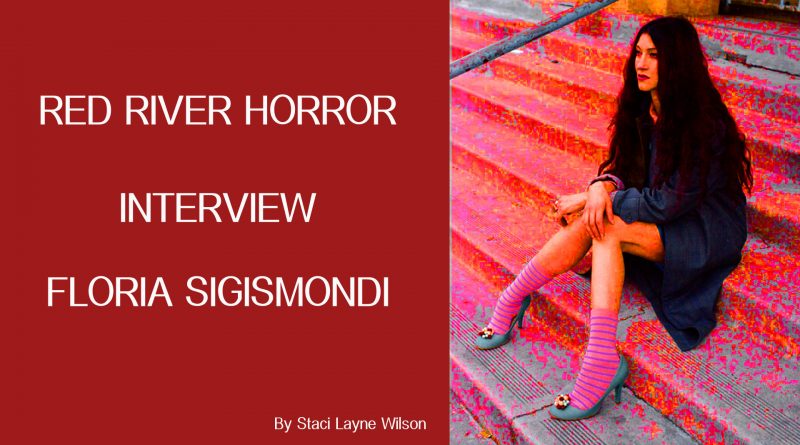Exclusive: Floria Sigismondi Unabridged Q&A on The Turning | Interview
The Turning is an updated take on Henry James’ immortal 1898 novella “The Turn of the Screw” –it’s set in the 1990s and is directed by Floria Sigismondi, a visualist who came into her own during that same era with her avant-garde music videos for Marilyn Manson (“The Beautiful People”), David Bowie (“Dead Man Walking”), and Sarah McLachlan (“Sweet Surrender”) to name just a few.
Hitting the big screen on January 24, this gothic horror tale follows an inexperienced governess called Kate (Mackenzie Davis) after she is hired by a mysterious man to take of his young nephew Miles (Finn Wolfhard) and niece Flora (Brooklynn Prince) in his huge, spooky, isolated estate. Needless to say, the place is haunted!
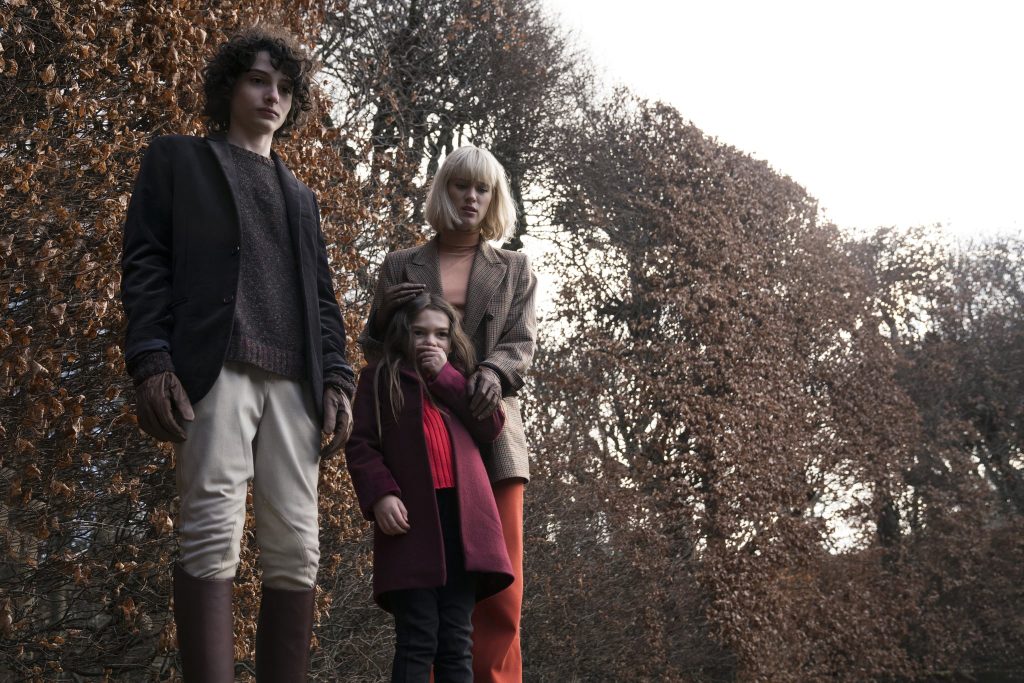
Finn Wolfhard, Brooklyn Prince, and Mackenzie Davis
We got the chance to sit down with Sigismondi to find out what it was like making her second feature film (her first one, The Runaways, came out 10 years ago).
Red River Horror: I know you’re very tapped into the art world, so I’m wondering whose work might have influenced you in creating this very gothic, mystical world of ghosts and secrets.
Floria Sigismondi: The photographer Francesca Woodman kept on creeping up. There’s something incredibly haunting about her work in those long exposures. The art of Arnold Böcklin, a Swiss symbolist painter, did these ghostly figures by water with long weeping trees which have something quite haunting about them. Paki Smith, who’s my production designer, we had a lot of painting references; we speak the same language. So it was quite exciting finding that common ground. And also the work of the German Romantic painter, Caspar David Friedrich. We actually reproduced one of his paintings and put it in Kate’s room and I remember it was so striking because as when I first saw the house, I fell in love with all these personalities all over the grounds, these amazing trees. And when I saw Friedrich’s work I went, ‘oh my god, this is crazy, he’s done a painting [that looks just like our location] a hundred years before. The painting was from the 1800s or something. And here we are in a place with that tree. In the credit sequence when her hand goes over the painting, that’s the one we had made. So little things like that inspired me. That helped me build the atmosphere and getting into the layering of things, you know.
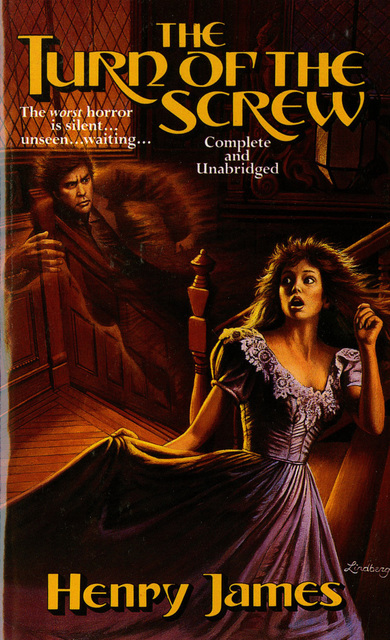
Certain things are truly the details for me because I’m a photographer, a painter, my mother used to sew and she was opera singer, so I’ve been around all the details of these [artistic] things. So for me, creating, the mood is essential. Even the wallpaper in Kate’s room, you may have noticed at first it’s this beautiful, idyllic painting of a garden with beautiful sparrow, and then by the end of it, again in the credit sequence, you can see that the birds are dying and they’re falling, the trees are all losing their leaves. I really had fun in finding those little things.
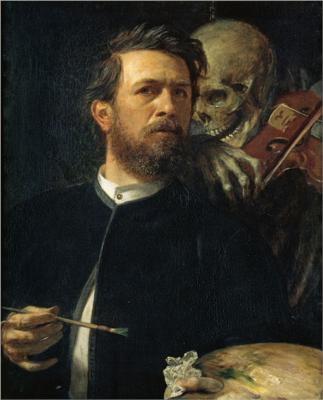

RRH: Since you’re an artist, do you make or follow storyboards?
FS: Yes, I make my own storyboards, unless they’re like action sequences. I do get a feeling sort of where I want to put the camera or what the feeling of the scene should be. I do a lot of watercolor paintings. So to define Kate and her look, with her short blonde hair and the long silhouette of her dresses that just hit above the ankle, and then to give her that combat boot which is a real kind of 90s thing. I just had so much fun creating Kate’s visual arc too, how she disintegrates as the movie goes. She’s very prim at the beginning with her blunt haircut in this beautiful platinum tone that has many different colors in it, but by the end of it, it’s getting grey and her roots are coming in and it’s all unkempt and unruly. The beautiful block colors that you saw in her from the beginning are starting to get more worn and textured and start to lose her a bit in the background, you know. And also with camera composition, we create a visual arc. In the beginning, she’s small but there are vibrant colors against the big frame. The large architecture, and introducing the house as a character, we see as the film goes on, it gets a little more claustrophobic. Eventually, as the tension builds, we get into hand-held, nervous camera movement, and wide angles moving in a little bit too close, causing distortion. So all those things, they’re just fun ways of telling the story that are more visual.
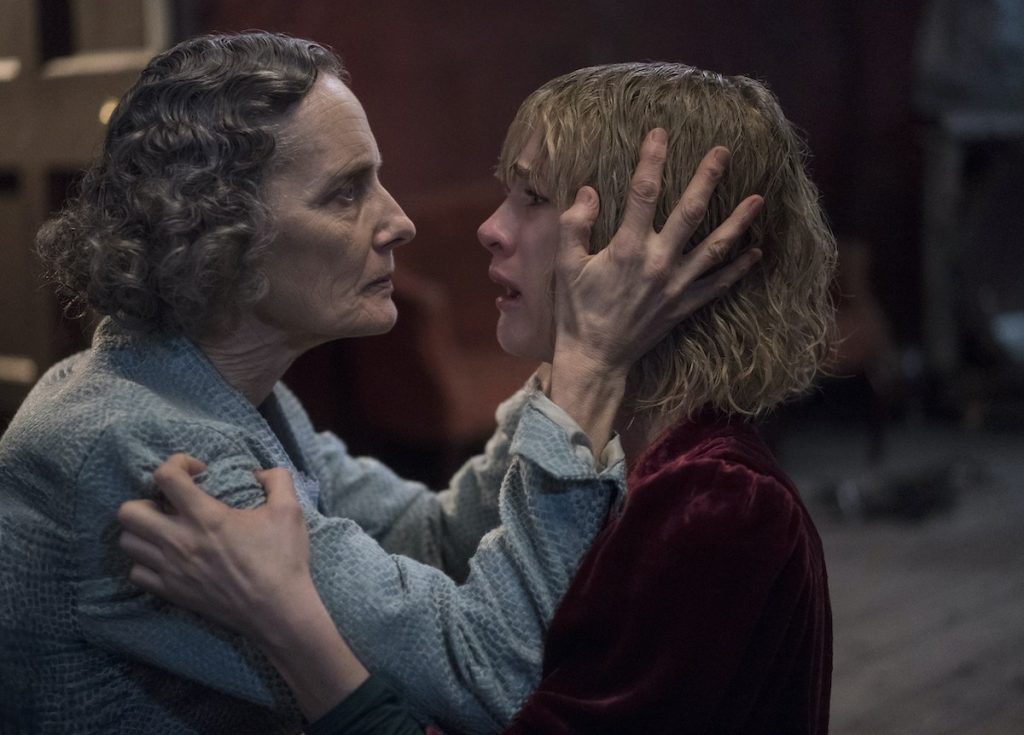
RRH: You’re not really known for horror, but many of the music videos you did had dark fantasy elements in them. Is horror a genre that you enjoy?
I guess I dabbled in sort of the feeling of it when I did Marilyn Manson’s “The Beautiful People” video. You like something without knowing why you like something. With a horror movie, you’re forced to look at why. And I think the reason why I like this genre, is that there’s this sense of the unknown. There’s the unknown in our lives, the outside world, how it works, where we come from, where we belong, what’s life mean, but there’s also this inner being. There’s a lot about ourselves we don’t know, and that we’re discovering through the act of living. And so, there are these dark corners everywhere that kind of fascinate me. I like to dive into that world, also it’s such a great medium to talk about things in an interesting way because it’s so interpretive and you can really create worlds with it. There are some things that you can say within horror that you can’t with a film maybe in a different genre.
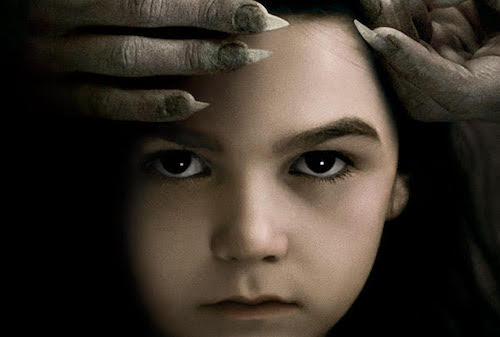
RRH: You had a lot of dark 90s imagery in the movie; for instance, Miles has a photo of Kurt Cobain, dead, tacked to his bedroom wall. Was it because that was the end of an era? The death of grunge and grit? Is that what made you set The Turning in the 90s?
FS: Well, I wanted to set it in the 90s because I wanted to modernize the story with a fresh take. But I didn’t want to make it present day because I didn’t want technology to interfere with the isolation I wanted to put Kate through. But like you said, that era is so rich with rebellion and angst, and it was all about deconstruction, they were even designing clothing with frayed edges. And so, for me it was such a great era for Kate as well, coming in and quite exposed into this world. Seemingly she has it all together, but we know from her mother, the couple of things her mother says to her, like, “Are you sure you can handle it?” And her roommate too, expressing doubt, you get the feeling that something has happened to Kate in the past. She comes in a little bit loaded but we don’t know why. And this world that she walks into, [is her downfall]. Whether it’s the kids that are driving her there, or the house and the ghosts, it is this idea of toxic masculinity… it got its hold on Miles, and the generational abuse and the cyclical nature of abuse have opened up in her, her own darkness and it’s spiraling out. It’s her reflecting into the house.
RRH: You do have some tricky imagery with mirrors. It looks all practical—was it?
FS: Yes. In that scene where she looks into the mirror and sees (the previous nanny) Miss Jessel, that was done completely practical. I think it’s funny when people look at you and go, ‘Why did you do that when you can do it in post?’ I’m like, ‘No, there’s something so beautiful about having the actors actually see each other and react with each other.’ It’s too easy to do something in post.
RRH: Was the casting of Joely Richardson kind of a wink to the fact that her grandfather Michael Redgrave was in 1961’s The Innocents and her aunt Lynn Redgrave starred as the nanny in a 1974 adaptation of Turn of the Screw?
FS: Her name was brought up to me by the studio and I just jumped at the opportunity. I thought it was absolutely perfect. You know, Natasha really loves to play in this genre, and we were so lucky to have her. Also, there’s this really amazing similarity to her and Mackenzie [she pays Kate’s mom] that I thought was really so beautiful.
RRH: It must have been great to work with such an established actor who’s honed her craft, but then you’ve got these child actors who hold their own 100%.
FS: Brooklyn, who is nine, has an amazing ability to create backstories and to change the tone at the drop of a hat. I worked with her on a short film a couple of years ago, called “The Demon Child.” And wow. Three hours working together on a little film and a photoshoot I did with her, and she was creating a back story on that little character.
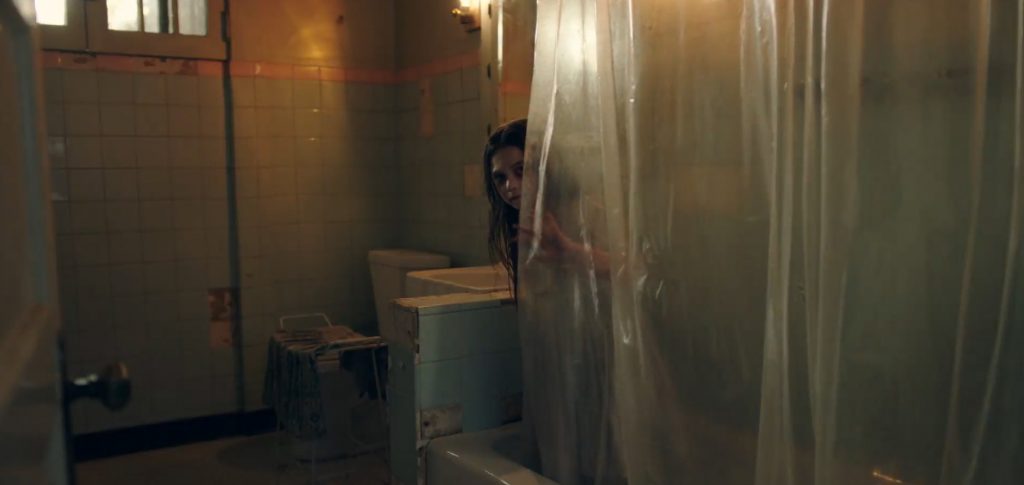
She’s constantly looking for things, even if she’s not part of the scene, she always looking on how to make her world bigger than it is. It’s amazing. So, she was fantastic. And then Finn–they were both my first choice–he’s like a dark angel with his pale skin and dark locks and dark eyes. It was something very different for him; we have not seen anything like this from him.
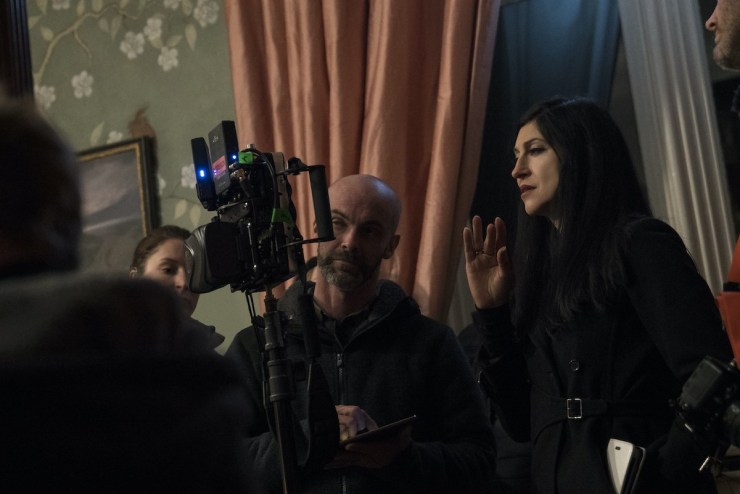
RRH: The estate is so wonderful. Was that just used for exteriors or did you shoot in that actual building?
FS: It was a practical location. When we drove up to the house, I immediately knew this was the house because it had these amazing grounds, a maze, a koi pond, it had the creepy lake – it was all there. We built the basement in the garage, and made the pool because people in Ireland don’t really have swimming pools. It was amazing because you were really able to bring the actors into a world that they were able to walk in and it’s all in the details. We were lucky that the house was the only estate that wasn’t a historical landmark, so we were able to paint in it and really create the colors and the look of the film. A lot of the places we scouted were more like museums and you couldn’t even touch a painting on the wall or anything else. It was fantastic because we had complete control, but then it gave us so much because we didn’t have to film on a stage at all, which I loved. I loved being in a real place because for me, I get inspired by the place, I get inspired by the high ceilings, the bird paintings, and all those different things that are just naturally there in the environment. And walking into a place that has so much history too, you know that people have been born and died in the house, you could feel it.
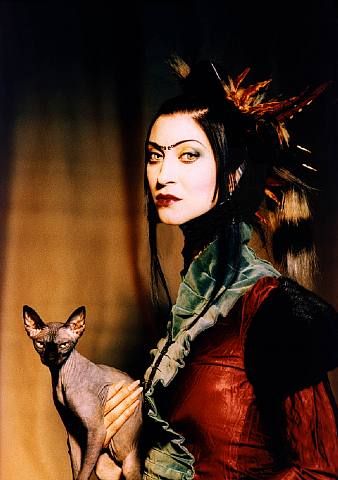
RRH: Finally, do you have any advice for young women wanting to get into film directing?
FS: Well, first of all, I think the pendulum should swing way the other way now! Because as a female in the world we’ve been fed stories through the male lens. Even if the movies have female protagonists or are written by females, they’ve always been made through the lens of males. I think what’s so great now is that we’re seeing females in front and behind the camera more and more. That’s fantastic. What I’d say to a young female is to shoot, shoot, shoot, shoot. I mean that’s why it’s important for me as an artist to work in different mediums just so that I’m always shooting. Always on set. You know, if I was just a film director I’d be on set once every two years. Maybe even five years. And so for me, it’s this constant muscle that you’re flexing and you get to know what your style is. You get to experiment on short films or videos or something. You get to find yourself. And once you have a voice then that’s your way to navigate through the world of filmmaking. You’ve got something very different to offer. And you’re finding it on your own, you know. It’s easier than ever with today’s technology: you put the camera in the artist’s hands. This is fantastic. You have an idea and it’s like, ‘Let’s go find a camera, let’s go do it.’ And it looks great, you know. We’ve seen features shot on an iPhone. Nothing should stop you from realizing your dreams.

